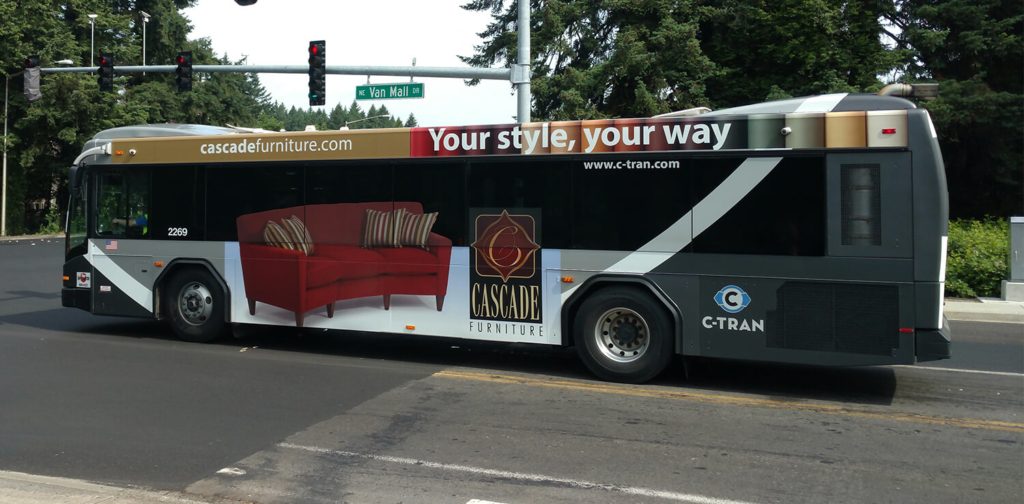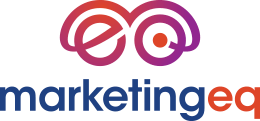Here’s the short answer:
We compare EVERTHING based on a CPM (cost per 1,000 people reached) basis.
After this, we can establish an effective CPM. That’s later. Much of what you need to know about relative advertising comparisons is listed in this article.
CPM is a universal measurement used to evaluate the cost to reach 1,000 people. I first discovered it reading Nielsen or Media Audit quarterly reports for connected TV and terrestrial radio measurement. (Circa 1990)
We’re going to trip back even further into the 1980’s to get an early perspective of comparisons. Suffer me through this math… scale of economy, targeted vs. broad audience… these are important.
 Typically, broad reach through traditional media, like broadcast TV (pre-cable or just at the inception) had the largest reach, with the lowest CPM. Everybody was watching TV and there were few choices. We will look at local ad insertion, not national, for this example. So if you pay $1,500 for Superbowl ad locally, reaching 800,000 in the Portland/Vancouver metro area (based on Nielsen ratings same time last year, or recent most quarter – no real-time data here!) your estimated CPM $1.80. That’s right, one dollar and eight cents for 1,000 people reached.
Typically, broad reach through traditional media, like broadcast TV (pre-cable or just at the inception) had the largest reach, with the lowest CPM. Everybody was watching TV and there were few choices. We will look at local ad insertion, not national, for this example. So if you pay $1,500 for Superbowl ad locally, reaching 800,000 in the Portland/Vancouver metro area (based on Nielsen ratings same time last year, or recent most quarter – no real-time data here!) your estimated CPM $1.80. That’s right, one dollar and eight cents for 1,000 people reached.
BUT, how many of those people areACTUALLY your customers? Maybe 30%, or less? Remove that percentage of audience from your 800K, and re-calculate those numbers! That would determine your rough-estimated effective CPM. Side note – Now, it’s silly to think buying one spot is effective, or could turn the door so to speak, but you get the idea about how scale of economy is at play here.
Terrestrial radio is another one with a decent CPM. Let’s say you can reach 37,000 people with one radio commercial for $220 from 10 am – 3 pm. Although radio, in general is very specific to audience profiles, (and hopefully most of the listeners could be your customer since that’s the point of using radio!) then a $5.94 cent CPM is great, especially since it’s a targeted audience. Again, one commercial is not going to keep sales streaming, but is it a wise investment? Perhaps a few spots every week for a few months would be, and it’s certainly efficient.
Transit ads are a bit trickier to measure because it’s based on traffic counts for specific routes, like this one for Cascade Furniture. It gets a huge reach and reached a very broad audience.
Reality Check- In retail terms, does it turn the door? That’s always the measure. Does it produce results? If not, then the CPM doesn’t matter!

Back to 2024. Now with digital, we get real time data (an old-timers match made in advertising heaven!) which is much better, and sometimes there’s still projections from the past that inform the future – like geo-fencing and looking at past data for a geography. The math is not always perfect, but it’s an effective way to plan, measure, and balance your marketing budget! Just do it!
Most digital display is going to pretty cost-effective with a $8-$15 CPM. That’s why we love it. Caveat – As long as you have the correct parameters on your audience, then it’s all effective CPM. Otherwise, we have to find out what % of that targeted audience is actually our customer.
Some DSP’s have this calculation built in for easy reporting. If you are a client and don’t have direct access, ask your agency for monthly reports with metrics.
When working with client’s budgets, we always have to look at all ad products and their CPM. This is where we find wasted ad spend.

It’s this easy – we are going to show you the quick way to assess everything you want with one relative calculation, using common products we use for our clients:
- Direct mail is about .79 per piece (average cost – graphics, content, design, mail list, printing and postage.) Multiply .79 x 1,000 – $790 per 1,000 people reached. To be expected. Tangible & targeted.
- SEO Search Display Ads – We reached over 180k people with a $1,200 spend. $1,200 / 180 = $6.66 cents. Not bad!
- Social Posts (not paid) is a bit trickier as you HAVE to have a platform that shows you views, likes, shares and offers reporting (we do.) We add up the cost over one year, divide it by the total audience = $7,200 / 34,000 = $194 CPM. – Guess what, this is pretty high, and there’s no guaranteed WHO saw those post – this is a red flag for the budget! I’m not suggesting you cut social, but it’s pricy with a negligible return. With PAID social, it could be $10 CPM up to $78 or more, depending on the criteria for your audience. It works, It’s not bad, and social is only growing!!!
- Text-based Search Ads are the most expensive by far (perhaps excluding massive Out Of Home installations on a building in New York City.) Let’s say you pay a cost per click of $4. Multiply that by 1,000 = $4,000 per 1,000 people reached. You get the idea! Here’s how I choose to look at this – it’s really $8k CPM, because it’s assumed that at least half of the audience is researching products and not ready to buy. But guess what, Google doesn’t care! They click, you buy! You should only do this is you have a strong conversion strategy and an expert SEO team to help you ensure you will be getting the greatest likelihood of sales from the spend. There are a bunch of factors to consider in getting this right. Once it’s gone, that’s it!
CPC vs. CPM – Details details
Digital advertising is commonly measured as cost per click (CPC) for impressions on your website or other landing pages. Clicks are fulfilling the intent of the user, for sure, but they could still be researching, not buying. So sticking with CPM and drilling down into the clicks later is a better plan when looking for effective value for the spend. And, unless you actually tracking conversions by taking an action for a sale on your website, or other landing pages, it can get pretty tricky.
New Scenario, measuring clicks and their meaing to sales and the campaign.
For SEO Search Display ads – we look at folks shopping for that product within the last 30 days – that’s very targeted just like search ads, but we aren’t paying by cost per click, we are buying based on CPM. If we get 120,000 impressions from our ad campaign within 30 day, and 290 clicks, we would consider this a win, because each sale is $1,000, and if only 10% of these people purchased (sales went up the following month!), that will be a 10-fold return on ad spend. Yep, that’s right. You also have to consider the cost per sale and the POTENTIAL return on investment if only 10% of your targeted audience actually converted into a sale. I know, the brain might be hurting now. And that’s ok. We have tools to work it all out. Just reach out and ask!
folks shopping for that product within the last 30 days – that’s very targeted just like search ads, but we aren’t paying by cost per click, we are buying based on CPM. If we get 120,000 impressions from our ad campaign within 30 day, and 290 clicks, we would consider this a win, because each sale is $1,000, and if only 10% of these people purchased (sales went up the following month!), that will be a 10-fold return on ad spend. Yep, that’s right. You also have to consider the cost per sale and the POTENTIAL return on investment if only 10% of your targeted audience actually converted into a sale. I know, the brain might be hurting now. And that’s ok. We have tools to work it all out. Just reach out and ask!
Author Julie Gorham has been buying and selling ads from 1990 to present. If you are questioning your ad spend or ROAS (return on ad spend) and you need an accurate assessment of your media spend and it’s efficiency, request a free advertising assessment. If you want to learn more about marketing metrics, check out marketing METRICS – The Definitive Guide to Measuring Marketing Performance. It’s the marketing managers bible!
